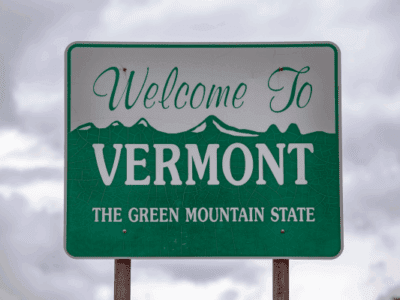Interior releases “regulatory look-back” plan
In January, President Obama issued an executive order calling on all federal agencies
to promote retrospective analysis of rules that may be outmoded, ineffective, insufficient, or excessively burdensome, and to modify, streamline, expand, or repeal them in accordance with what has been learned.
Last week marked the deadline for agencies to submit preliminary plans for review of their regulations to the White House. Today the first wave of plans were publicly released, in conjunction with an appearance by “regulatory czar” Cass Sunstein (head of the Office of Management and Budget’s Office of Information and Regulatory Affairs) at the conservative American Enterprise Institute.
The Department of Interior’s plan was among those released today. (Aside: Am I the only one annoyed that the White House is sending the public to a commercial site for these documents, instead of posting the pdfs on its own site? Update: Interior’s plan is now available from the White House as a pdf.) It’s too early to comment on any regulatory revisions that might come out of this plan, because the plan provides only a general pointer to areas in which the Department intends to review existing rules over the next two years. The devil is always in the regulatory details, and those simply aren’t revealed here. But the plan does offer some insight into how the “look-back” idea is playing out in this administration.
I have two key concerns about the White House requiring that agencies review existing regulations. The first is that any lookback will divert agency resources from new initiatives, and limit the agencies’ ability to set their own regulatory (or deregulatory) priorities. The second is that the lookback process may systematically advantage the regulated community and undermine environmental protection.
This plan suggests to me that the resource diversion problem is fairly minor. Of course when budgets are already tight any diversion may be problematic. But agencies, which are experienced bureaucratic actors, are going to find it pretty easy to characterize their pre-existing priorities as fitting this new mandate.
Interior’s plan illustrates the extent to which agencies can manipulate this mandate, like others, to fit their own designs. Basically, Interior says it is already doing regular review through its existing annual regulatory process. And the areas the Department has identified for review in the near term — including, among others, oil and gas royalty valuation, ESA implementing rules, and safety rules for offshore oil drilling — were all on the table long before the President’s January executive order. The one element of the plan that looks like a surrender of agency priority-setting authority really isn’t. Every year, the Department says, it will identify at least one existing regulation for retrospective review. That won’t actually constrain anything, because it’s so general that every year the agency can just point to existing regulations in any broad area it’s currently interested in as “under review.”
The problem of skewing the playing field in favor of the regulated community and against environmental protection looks more serious. Interior’s plan suggests, and the White House’s call for these plans clearly revealed, troubling assumptions that over-regulation is a worse problem than under-regulation and that traditional regulation is generally inferior to market-based incentives. So, for example, Interior’s factors for deciding whether a rule needs review include whether the rule “is considered burdensome or unnecessarily restrictive,” which sounds to me a lot like “regulated parties don’t like it.” But they don’t include whether the rule is failing to achieve its environmental protection goals because it does not go far enough, leaves some key regulatory gap, or does not have sufficient enforcement teeth. The plan also emphasizes market forces and cost-benefit analysis, which may be fine for setting the price of oil and gas royalties but are utterly inadequate (not to mention statutorily inappropriate) to the tasks of deciding such questions as where and under what conditions to allow public lands oil and gas development or how strongly to protect endangered species.
Just yesterday, the Washington Post reported that shrimpers in the Gulf of Mexico are flouting requirements which have been in place for twenty years that they use turtle excluder devices (TEDs), and that failure to comply with those requirements is linked to the deaths of hundreds of sea turtles. It’s the Department of Commerce rather than Interior that imposes the TED regulations, but the lesson is the same. Clearly, the shrimpers consider the TED regulations “burdensome or unnecessarily restrictive.” The turtles might beg to disagree. Under the White House’s approach to regulatory review, only the shrimpers’ complaint would lead to regulatory review. The problems of under-regulation or under-enforcement undermining our statutory commitment to conservation would be swept under the rug. That may be good for the shrimping business, but it’s no way to run a government which is supposed to look out for larger societal interests.
Reader Comments
One Reply to “Interior releases “regulatory look-back” plan”
Comments are closed.







http://green.blogs.nytimes.com/2011/06/01/see-no-wild-lands-speak-no-wild-lands/?scp=3&sq=SALAZAR&st=cse
Didn’t the Bush Administration lie down for Utah in a law suit (a law suit that Utah had already lost) only to turn around and apply the settlement on ALL BLM lands nationwide? I remember when that happened. A sad day; a change that reversed decades of conservation policy. Our worst fears–as environmentalists, as a Westerners–about Bush come true. You have to admit it, Dick Cheney was thinking big. And now Obama so easily caves.
Do we really NEED to transform the American West into a giant drilling pad surrounded by ORV parks? Our we really that desperate now?